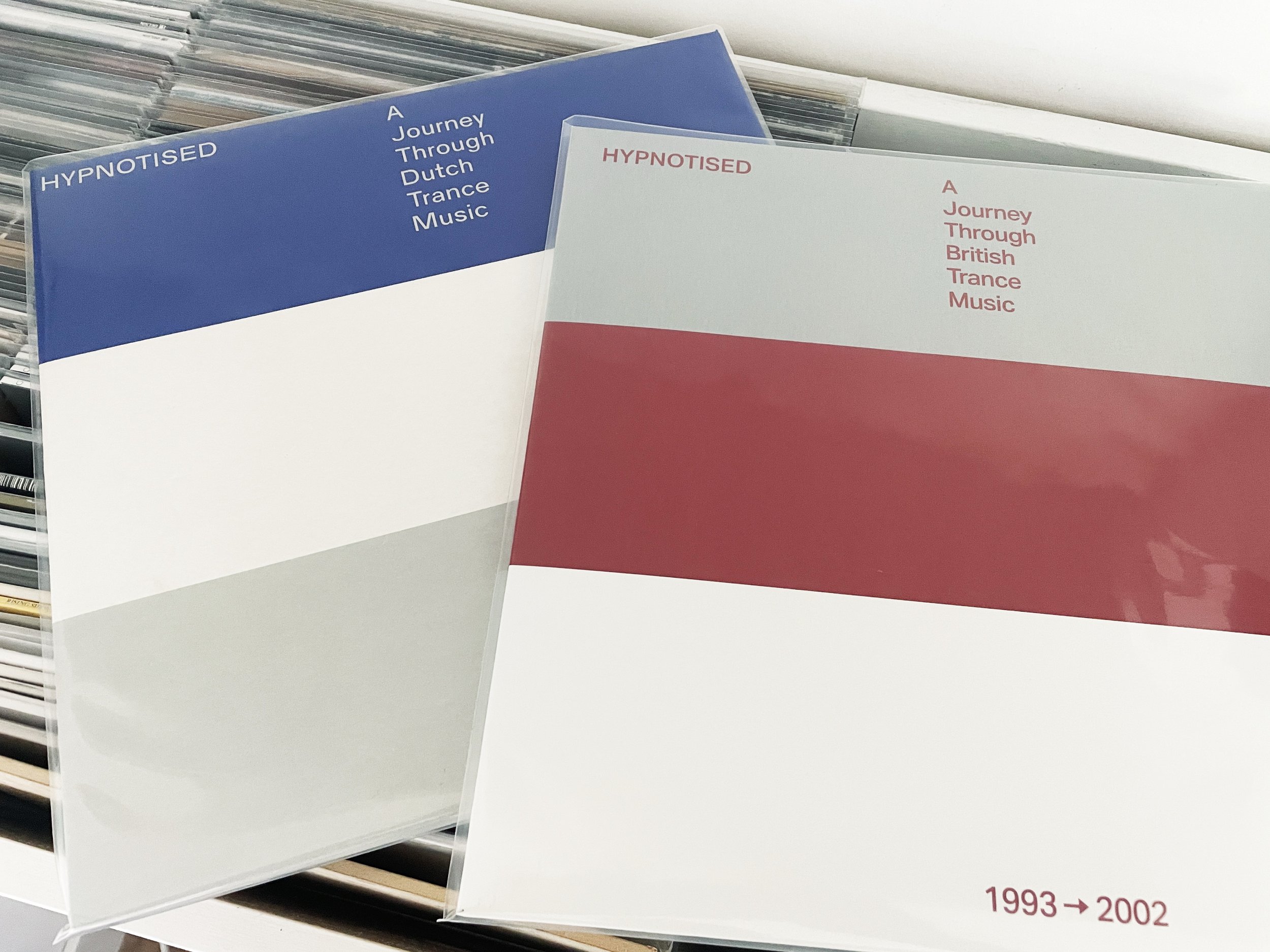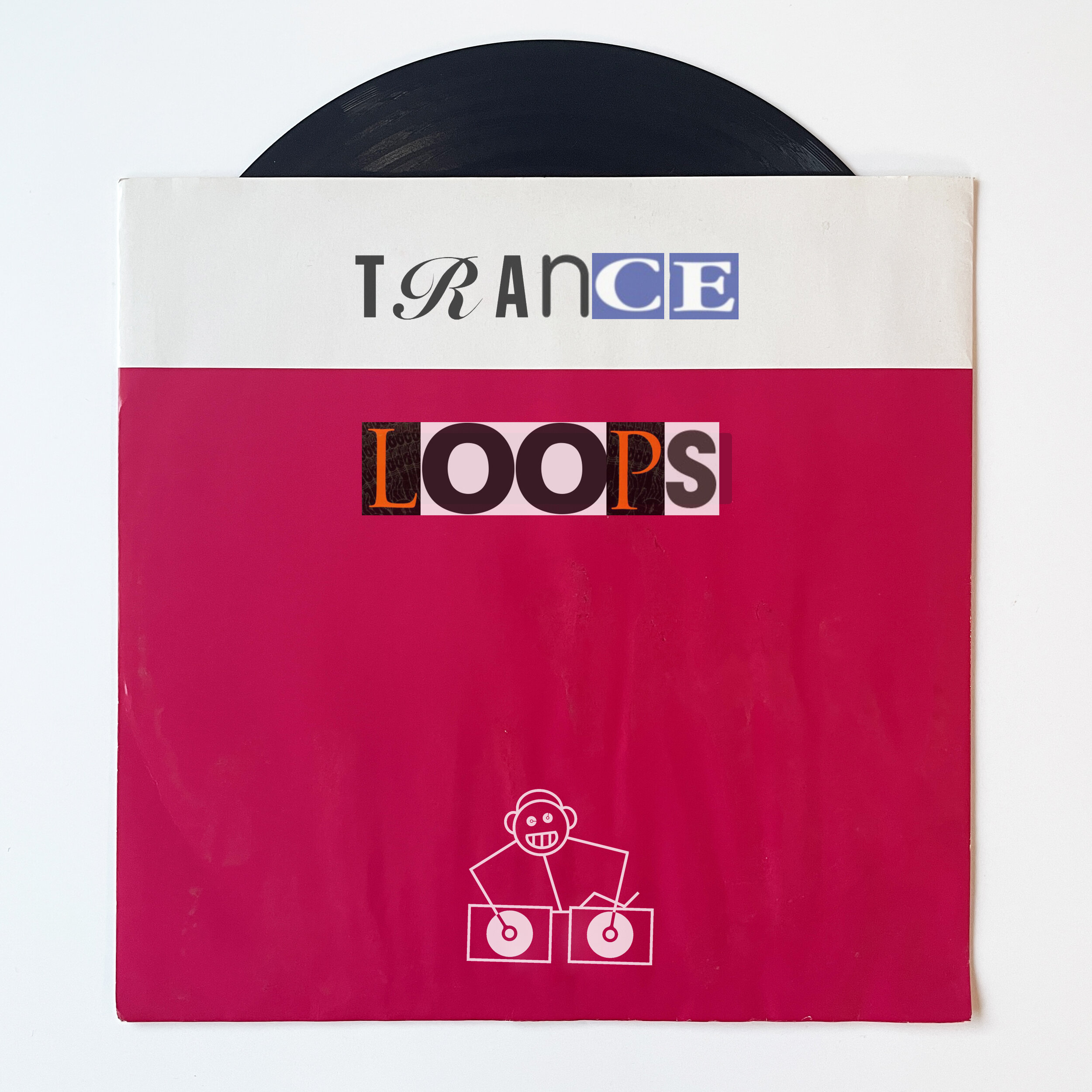It’s the first book of its kind, and for anyone who enjoys the sweet spot of classic Trance music in the late 90’s and early 00’s, it’s an unmissable factoid and commentary on the prime era of the scene. I wanted to support this new encyclopedic endeavor even further and had the idea to pull together some kind of mix here on ASIP to also shine a light on the launch of the book; on the many angles of classic Trance music; and also invite Arjan to provide a bit more detail surrounding his passion project (which follows further below) to round out the feature into a full-on Trance deep dive.
Originally, I wanted to pull together the ambient-leaning side of Trance music - a side that is often misunderstood as questionable chill out music (i.e the ‘Chilled Euphoria’ series) or when done well, many of Global Underground’s Electric Calm mixes by The Forth, and the second CD of this Platipus Beginners Guide. But what may have been originally conceived as an Ambient Trance mix for this Portals feature, quickly took a new direction.
For me to highlight the many Ambient Trance genres, sub-genres and styles, became a daunting task. It’s something that can go many ways depending on your upbringing (and geographic location), such as early 90’s psy/goa in style, acid+breaks, Ambitrance, Euro-trance remixes, or even the 00’s Space-Ambient style. All are often grouped around an ‘Ambient Trance’ notion, depending on your own subjective experiences, and it quickly became a massive task to whittle it down to one mix without going all genre-police on myself. So instead, I came up with a different concept and approach, taking inspiration from Arjan’s book title ‘Hypnotised’, the period, labels and artists that are a part of the book, and the idea of providing “a journey through Trance music”...
What could be more hypnotizing than Trance music itself?
The result is the accompanying mix, titled Classic Trance Loops, which was created by sampling specific segments of vinyl records from my collection.
Each sample was ripped, digitized, and played back/edited live on CDJ’s looping feature, and further re-recorded as a continuous max~3-minute looped section. Then, it was all compiled into one mix in Ableton. (Note, I fully understand there is likely a much easier way to do this with various bits of gear, samplers, Ableton etc, but I enjoyed the process of doing it this way, as it both made me revisit my record collection and mess with my CDJs, which is a treat and a rarity nowadays - I’m a tactile DJ at heart).
Once the core of the mix was compiled in Ableton, I realized it could do with some finessing by someone who knew a lot more about the tool than I do. (I know enough to be dangerous, and with 50+ tracks, multiple sample levels, vinyl noise, and tonnes of loops, it needed a bit of love and external ears). So, as lost brothers in Trance, and one of the best DJs I know, I handed the project off to my good friend todos, who ran the project through his extremely detail-oriented ear, to clean up the sound, artifacts, levels, adding some effects, and giving it a polish (as much as I could have set him up to polish it anyway - ‘You can’t polish a turd, but you can throw glitter on it’, the wise man once said). The end result is a true collaboration between us both which I’m also very proud of making happen. todos will modestly tell you he didn’t do much, but trust me, he did, and I publicly apologize here to todos for so many versions back and forth!!
Ultimately, the mix is a quick-moving snapshot of some of the finest classic Trance moments, without you ever needing to hit the club (unless you’re ok dancing and waiting forever for the drop). It tantalizes those memorable moments found in breakdowns or the euphoric signature synth lines, reminding you of special melodies that will undoubtedly come flooding back in a second. Plenty of classic Trance tracks and loops were recorded in preparation and were unfortunately left on the chopping board, but it was a tough enough job to get these ones sounding (relatively) coherent.
Note, it’s not the expected ambient that you see around these parts either, if that’s what you’re here for. But it is definitely sequenced for more downs than ups; suiting a more horizontal/storied listen; and is hopefully a journey within itself. In a similar way to how I approached the Portals KLF (A New Dimension) mix, it’s meant to be a fun listen and to compliment this feature as a whole. We hope it stirs some moments of joy and reflection to whatever clubs, fields, beaches, or mega-clubs you grew up listening to this music in. Bedroom DJ’s unite.
If the music and mix itself wasn’t enough to take you back to the euphoric highs of Gatecrasher, Home, Amnesia, Cream, et al, then a take a read of a slightly deeper dive into the UK impact on this classic Trance sound, courtesy of Hypnotised author, Arjan Rietveld.
British labels: sanctuaries of trance
[Text by Arjan Rietveld, based on the book ‘Hypnotised A Journey Through Trance Music’]
The United Kingdom played an elemental role in the development of trance music across the globe. Aside from the thriving club scene making moves within the country during the roaring nineties, a string of independently operated record labels had already stepped up to chart new musical territories.
In the early nineties, British artists such as Jeremy Dickens, Paul Oakenfold and Simon Berry noted the potential of electronic music and quickly seized the opportunity to set up their own ventures. Each of them started to release material from themselves as well as their network of friends. Meanwhile, 12’’ vinyl records were in demand, as both DJs and collectors preferred the format. Henceforth, it wasn’t unusual for those early labels to sell five-digit quantities of a single record.
Looking back, the most successful ventures took a more broad-minded musical approach, and by doing so, found new paths for the electronic sound to reinvent and expand. Following their efforts, those artists who set up a label themselves also crafted excellent opportunities to put themselves on the global music map. They were able to create a wide network across the industry, whilst also having their name directly connected to each and every record that came out on their label.
Founded in 1986, FFRR was the first label to cast its nets far and wide when it came to dance music. The platform made some big moves in signing a stable of top-shelf hip-hop and R&B acts, early house producers as well as electronic artists within its first years of existence. In 1989, Paul Oakenfold set up Perfecto as a natural extension of his Spectrum club night. In consecutive years, Hooj Choons (1991), React (1991) and Platipus (1993) were added to the ever-growing list of defining electronic music imprints that reached far beyond British territories.
In the slipstream of these platforms, specialised labels such as A Trance Communication Release, Bedrock, Deviant, Silver Planet and Xtravaganza stepped up to offer neatly curated releases. Meanwhile, platforms like Global Underground and Renaissance jumped into the opportunity of pushing the artist-led mix series format, thereby playing a decisive role in making the ‘late’ progressive trance sound available to a more diverse and global audience.
The commercial success of the independent market didn’t pass unnoticed. As a response, various major publishers set up trance-dedicated sub-branches that put their competitive edge to good use to penetrate the market and reap maximum benefits from the continuously growing market that trance then represented. Publishers such as EMI (with its Additive and Positive branches) and Mercury (with Manifesto) pushed more commercial sounding dance acts to the fore. For instance, dance acts such as Fragma, Ian Van Dahl and Lasgo were all familiar with popular British TV programs like Top Of The Pops.
With the competition between actors raging, the digital shift of paradigm that came with the new millennium created new challenges for independent labels. Many labels were simply not able to cope with the sudden upsurge of illegal downloads from websites such as Napster and Soulseek - and its negative impact on physical sales. Most platforms - including Hooj, Platipus and React - soon vanished into thin air, or magically resurfaced only years later.
One exception is Oakenfold’s Perfecto. The imprint managed to withstand the test of time by becoming more flexible and adapting their policies to this intricate new reality. Interestingly, the label still puts out high-principled, and mostly goa-infused, material on a regular basis. After over thirty years of operation, that’s an achievement in its own right. - Arjan Rietveld
~
Trance Loops, was sampled, recorded and mixed by ASIP. Engineered, further effects, finesse and icing-on-the-cake by todos.
Listen on Soundcloud, Mixcloud, Youtube (below) or the ASIP Podcast.



















